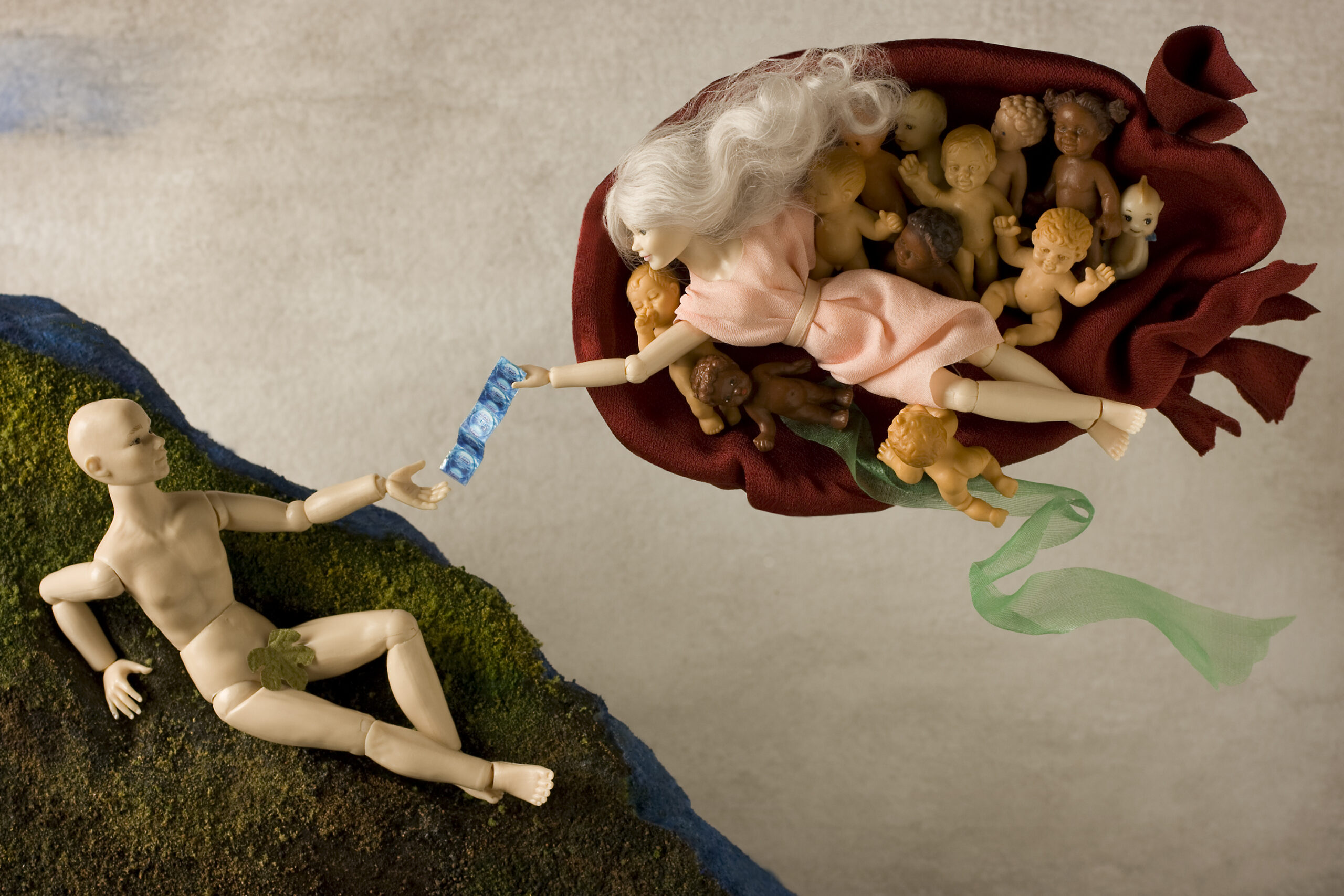Last Updated on 11/21/2023 by Chris Gampat
For as long as art has existed, art has been a tool for exploring the human psyche. But, many classic works of art, myths, and stories embark on this exploration through the lens of a longstanding patriarchy, painting women as objects of beauty or even scorn. Fine art and miniature photographer Grace Weston reframes classic myths and artwork through the lens of the modern female. Weston’s latest ongoing series, Reclaiming the Muse, re-frames art’s longstanding search for answers on the human condition through the female lens. But, Weston’s exploration of the human psyche doesn’t use actual humans, but rather dolls.
All images by Grace Weston. Used with permission. Please visit her website or Instagram for more.
While convenience initially drove Weston to work with miniatures, the fact that dolls have been used across cultures for thousands of years to carry out psychological projections adds another layer to her work. Dolls, like some of the characters in the paintings and stories she recreates, are often used to objectify beauty. Weston is essentially using an object that objectifies women to retell the longstanding stories that objectify women.
How Grace Weston Uses Minimal Gear to Retell Historic Stories
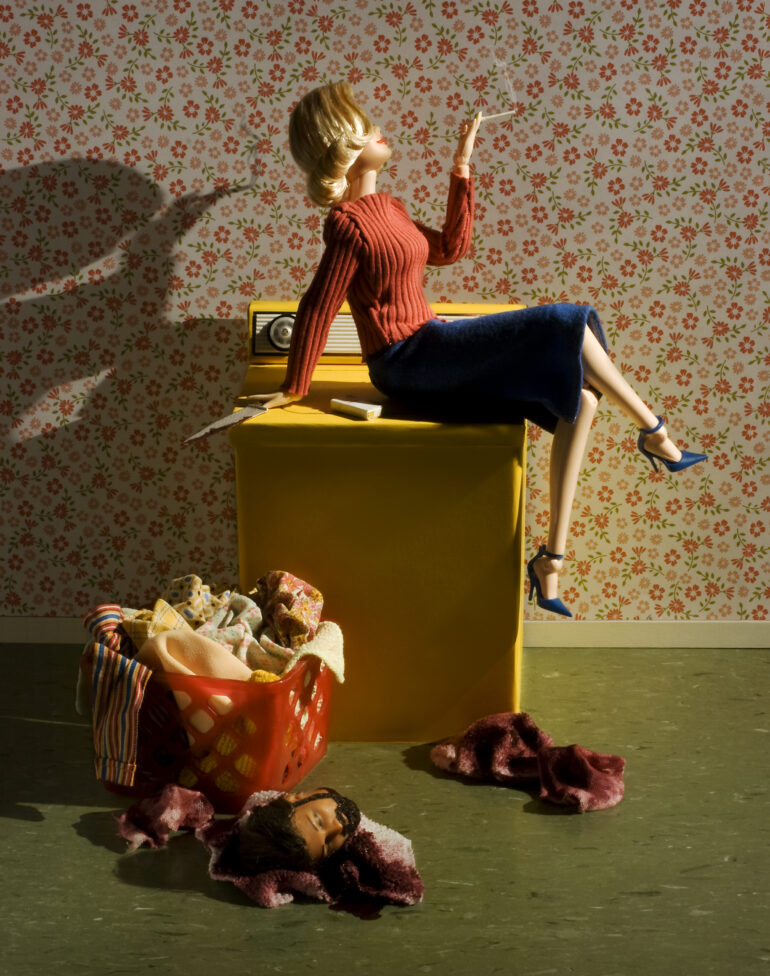
Weston always had a small point-and-shoot on her as a teen, but it wasn’t until she found painting frustrating while studying art in college that she began considering photography. She explained that she was encouraged by recognition from her professors and then worked as the darkroom assistant to really immerse herself in photography.
I do think it’s important to remember that one can make photos with a cardboard box!
Grace Weston
Weston started working with a Sinar 4×5 and a Bronica medium format camera, using close-up lenses and extension tubes to capture miniature scenes. While she says she came into the digital world “kicking and screaming,” she continues to keep her gear simple — she uses just a Canon Rebel body and a macro lens.
“I’m very basic with my gear,” she says. “I’m able to do what I need to do, without a lot of bells and whistles. I do think it’s important to remember that one can make photos with a cardboard box!”
She takes a similar approach to her lighting. She typically uses strobes for her work. But she sometimes uses Dedolights, and she once did a Noir series with only standard LED lights, including book lights and zipper pull lights designed for running at night.
How Grace Weston Tells Human Stories, Without Humans
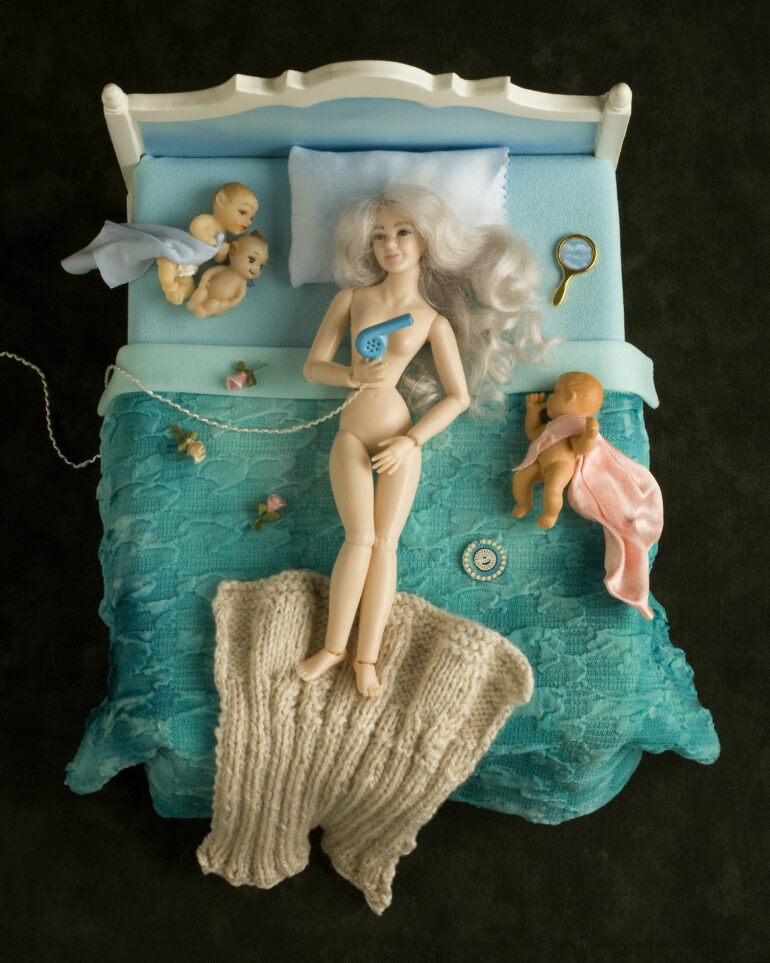
Venus and The Pill (after Botticelli)
Miniatures are also a key part of Weston’s gear, including handmade props, clothes, and sets, as well as dolls. She was initially drawn to miniature photography because she could relax and take her time without hiring a model, renting a large studio, or storing large prop items. But dolls quickly became part of the message.
Weston is essentially using an object that objectifies women to retell the longstanding stories that objectify women.
“Like many people, I’ve collected, made, and been charmed by miniature items throughout my life,” Weston said. “They allowed my imagination to expand and express in the physical world. Never that big a fan of baby dolls as a child, Barbie got my attention – a doll on which I could project my fantasies of adulthood.”
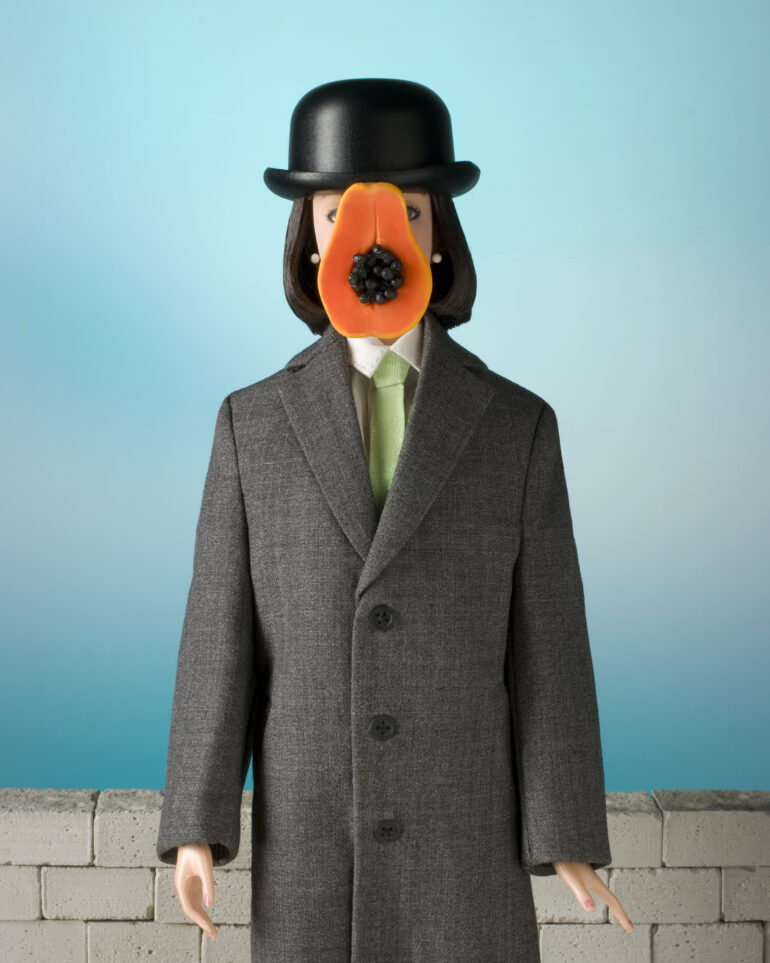
Grace says that the history of dolls goes back as far as 35 to 40 thousand years ago with the Venus of Hohle Fels. Through that long history, she added, dolls have served many different representations, from fertility dolls to voodoo dolls to action figures.
“I find even the term, ‘doll’ fascinating and layered,” Weston said. “It has been applied as slang to women, as an endearment or a sexist term, to denote beauty, or to objectify. Common tropes in Western male-dominated art history presented female muses as passive beauties or maidens in distress. Although not human models, the characters in my scenes represent autonomy and agency.”
The Story Behind Reclaiming the Muse
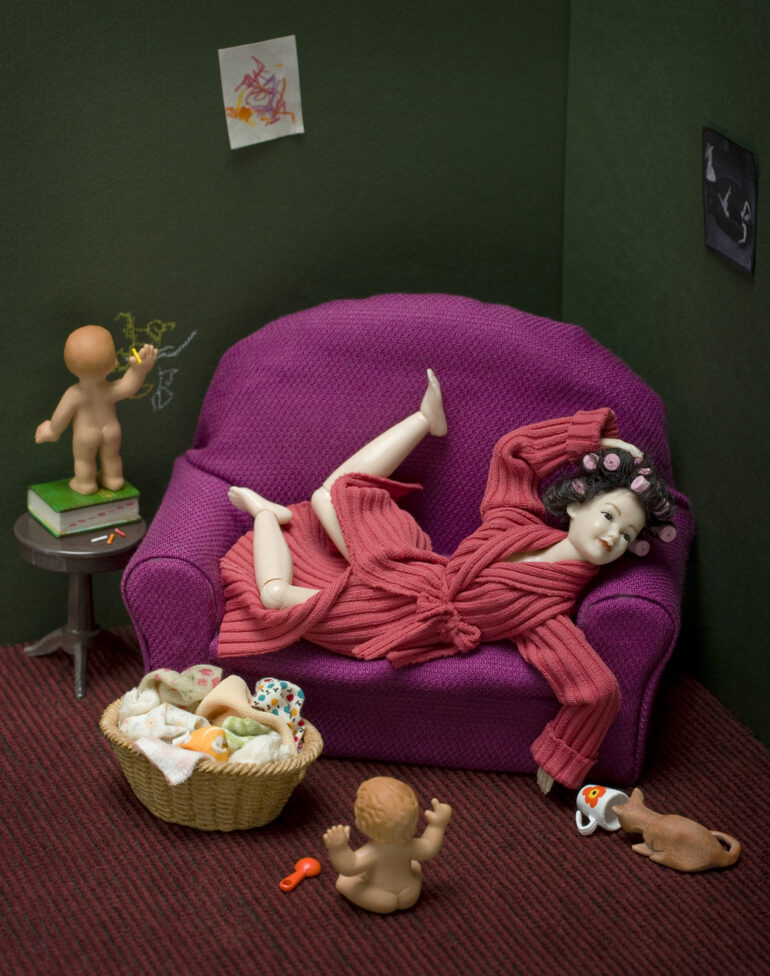
The Reclaiming the Muse series was initially inspired by one of Weston’s favorite photographs, Satiric Dancer by André Kertész. The original pictures the cabaret performer Magda Förstner posed on a couch, with a sculpture on the left and a painting on the right. When researching the work, Weston realized that the woman in the artwork is largely forgotten, unlike the photographer. That inspired her to create a work on how some women have fun-filled wild years that are later replaced with a traditional one of marriage and parenting.
“The kooky pose of the original model became reinterpreted as an expression of the chaos and fatigue of parenting,” she explained. “The sculpture on the left in the original became a toddler drawing on the wall with crayons. In a rather meta choice, I replaced a photo on the right wall with the actual Kertesz image I am referencing.”
Weston continued to reinterpret classic work for the series, including some of the world’s most recognizable paintings like The Creation of Adam, part of the ceiling on the Sistine Chapel created by Michelangelo. The original painting depicts God, surrounded by angels, reaching out to touch Adam’s finger. Weston’s image, Divine Intervention, reinserts the female into the equation. Only, instead of touching Adam’s finger, she’s handing him a tiny pack of condoms while surrounded by babies.
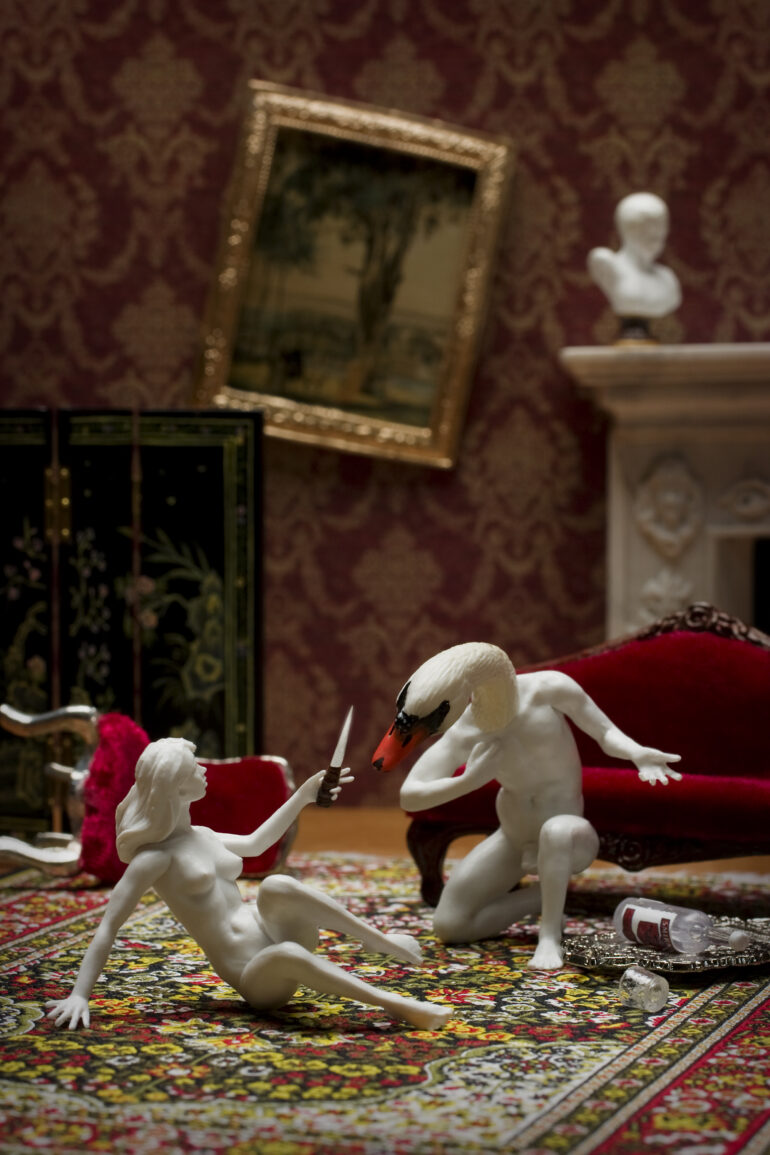
Along with classic paintings and art, Weston’s series is also inspired by mythology. In the Greek myth, Leda has children with the god Zeus, who appears to her in the form of a swan. However, some variations say Leda was seduced by the swan, others say she was raped. Weston’s interpretation clearly says the latter, with Leda holding a knife to a man with a swan’s head. Because the Greek myth has been the subject of many paintings and artwork, Weston used miniatures that look more like sculptures than toys, with a crooked painting hanging in the background.
Weston’s Take on Modern, Computer-Based Art
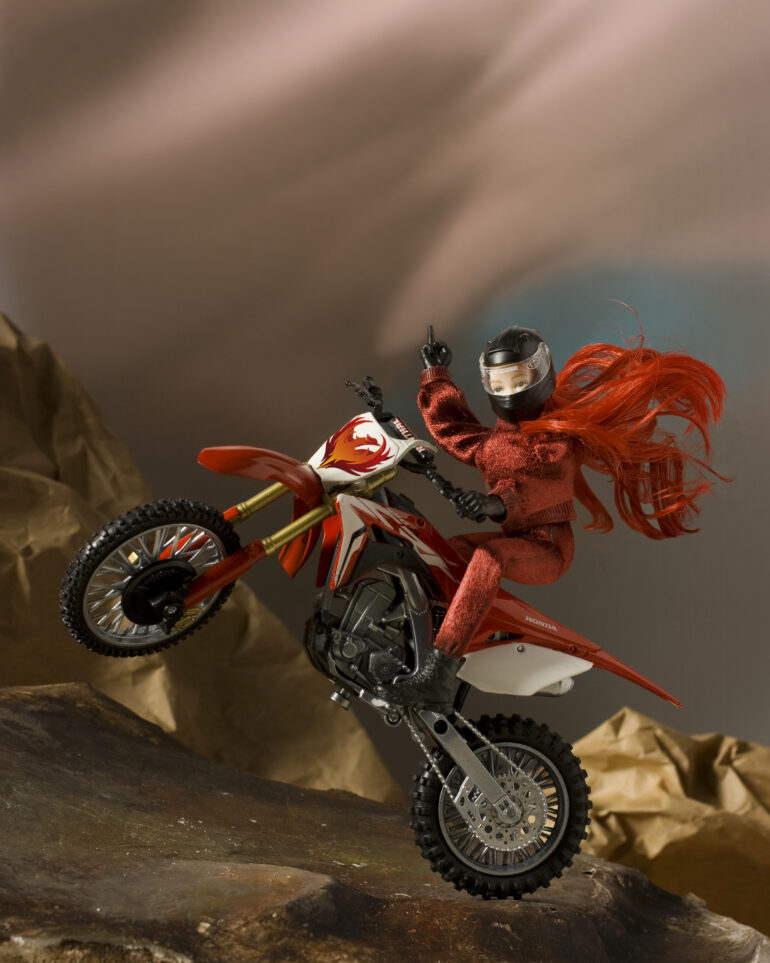
While Weston’s work is a modern take on classic art, the photographer prefers to create more with her hands than with a computer. She explains that she uses Photoshop sparingly to clean an image or add special effects like cigarette smoke. But, most of the work is done with the hands-on creation of props and sets, then turning those items into art with optics and lighting.
Her work exploring the human condition isn’t meant to be perfect, which is one reason Weston shies away from using artificial intelligence. “It’s an understatement to say amazing images are being created with AI,” she said. “I’ve seen so many that are just ‘too’ perfect for my taste, devoid of personality and depth. Welcome to the Uncanny Valley! But I do know artists that are exploring it as a starting point, and then working hours to take it further in their own way. That being said, AI is just not my jam. I do think the human touch will only stand out more as AI imagery spreads.”
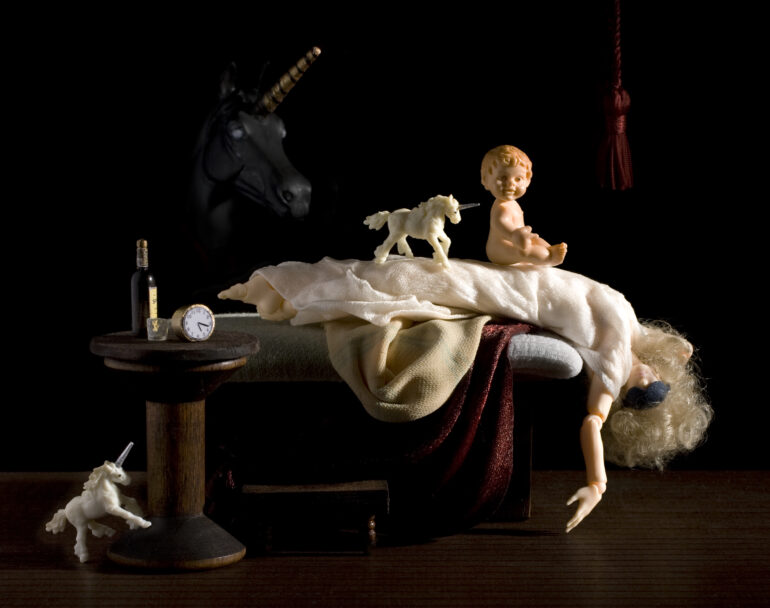
“The many disturbing things about AI include the theft of images (copyrighted or not), and the use of AI as a tool for lies and propaganda,” she added. “Technology generally far outpaces laws and regulation to protect from misuse, and that couldn’t be more dramatically true than with AI.”
Reclaiming the Muse is an ongoing series, but it has already earned Weston a solo exhibition competition with All About Photo. Grace Weston shares her work and behind-the-scenes looks at her handcrafted props on Instagram.


